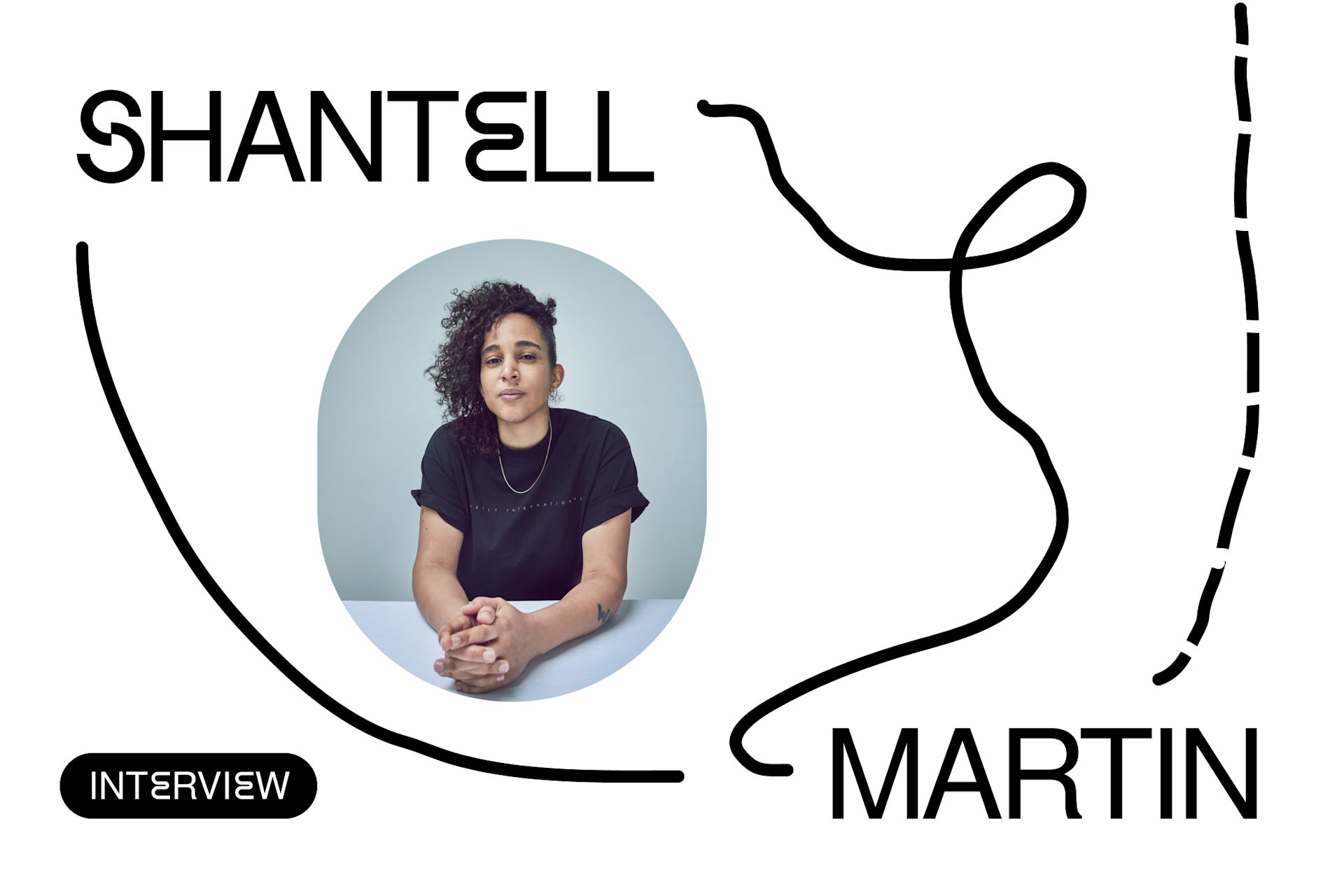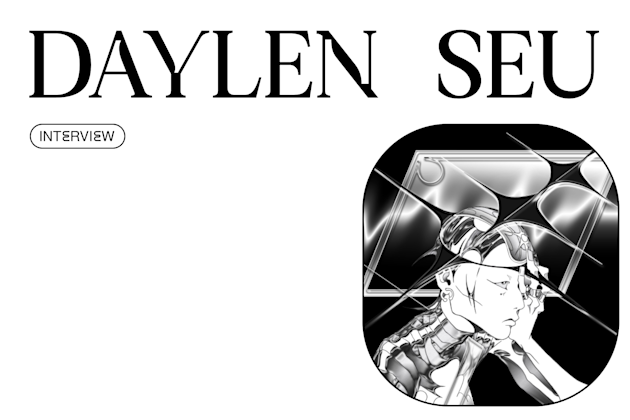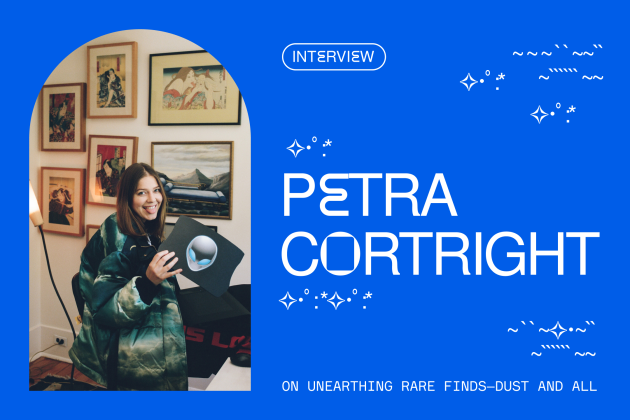Shantell Martin on remapping the old art world with NFTs.

Shantell Martin’s black-and-white line drawings are intensely personal, intuitive, and open to interpretation—they can be seen as maps drawn from her own playfully inquisitive mind. But what draws her to NFTs and the crypto space is that the rules are largely unwritten and there isn’t a map or a guide. She sees the possibility in all of it and is an advocate for artists not just to make work, but to actively experiment with the business of being an artist.
Over the years, Martin has become widely known for her intimate sketches, large-scale installations, and collaborative performances in both commercial and traditional art settings. Right now, you can find her work on view as part of her first retrospective at the New Britain Museum of American Art, but also on the shelves and even walls of the Whitney Museum gift shop.
We talked to the artist about how she’s approaching NFTs, the importance of collaboration, and what the traditional art world can learn from the NFT space.
How did you find your way into NFTs and crypto?
I don't know if this sounds silly or not, but in the evenings I usually go on Zillow and search for houses—it’s a way that I can get out of my head from art and just relax. Over the last couple of months, I started Zillowing less, and instead, spent more time on Clubhouse learning about NFTs. I also started to enjoy reading more about them and found the community to be quite refreshing. It’s nice to see that people in the NFT space aren't necessarily being put in boxes or there isn't really a roadmap for what to do. I also saw a few of my friends on Foundation and was able to join.
What’s one of your main takeaways from being part of the NFT community?
A lot's changing very fast. I hope people understand that these things are—even though they have been around for a while—still quite new. I hope people are patient with it and that people think about how to do things differently. As I said, I've already noticed people are asking, "Why aren't there categories? Why aren't there boxes?" In my opinion, those things will happen, but we can reimagine and recreate them in new ways. We don't have to cut and paste from a seemingly broken system to build this new one.
One of the reasons why I'm starting to interject myself more into this space is because I have the experience of what doesn't work. I don't want to see the old structures get replicated and then find myself in another space that doesn’t work. I find it all exciting, and I hope that I can have a voice here that can be helpful to others.
You recently tweeted, "The art world can learn a few things from the NFT space." What are some lessons you have in mind?
The art world predominantly lacks transparency. It is a “world”—though the art market and the art world are two slightly different things—but they are a world that lacks transparency and is very manipulated from the sidelines. NFTs aren’t trying to hide the transactions or the fact that people are buying these works with crypto. That initial honesty about transactions is so valuable. We have an art world where galleries act as custodians for the art and often try to hide that they're selling the art. They make it seem taboo for artists to discuss money, finances, or income, which creates this barrier and hurdle between artists to become financially stable or educated because they feel like understanding the business side could take away from their creativity.
I would argue that for any business we're in, it's important not to be an expert in all areas, but to at least have an understanding of the process. If you're a living, working artist and you're showing in galleries and institutions, then your work is being sold. Fundamentally, that's a huge part of your business and career.
Within the NFT community, we're seeing artists supporting each other. I'm a huge believer in collaboration and non-competition. If we're thinking competitively, we are thinking that we are better than or less than, whereas if we're thinking collaboratively, we are thinking, “‘How can we make this system better?” That’s something that we don't really see much of in the art world because living artists are seen more as commodities or expenses, versus what is holding everything up—the epicenter of it all.
The more that we have these conversations, and the more that we observe what is broken and what is not broken, we can repair, fix, and all benefit from this space that we're building. People get stuck in this notion of how things should be done or want to justify things because that's how they have always been done, versus just really coming to things with fresh eyes and learning from the experiences of others.
I love that artists are being more collaborative versus competitive here. How are you thinking about collaboration with the NFTs you’re creating?
My next NFT on Foundation is actually a collaboration with the photographer Andrew Boyle, The Room. In 2011, Andrew photographed me in my tiny studio that was in a house where I was renting a room. At the time, no one knew who I was, and I didn't know if I could even do anything with art. A few years later, when I was finally able to get my own studio outside of the house, Andrew came and photographed me again. Earlier this year, I went to his studio and he photographed me there. The Room is a stop frame animation with all of those photos.
I like the idea that my first collaborative NFT is made with someone who has been there since the beginning of my career. It’s called The Room because “the room” is a place where you reflect, grow, and have the time and space to think, and in a way, Andrew and I have grown together in all of these rooms.
I like that there’s a thread about how time impacts your process. This applies so well to how NFTs function because there’s a timestamp associated directly with every transaction on the blockchain. Have you thought about creating work, minting it, and then coming back to revisit it over time?
I think about this all of the time actually. I have my art practice, and another part of my practice is just about thinking and organizing. I've been using this last year as a way of understanding provenance. In my archive, there are a couple thousand pieces, and it's incredibly hard work as a living artist to organize, catalog, photograph, condition report, track, and locate all of your work. I don't believe the dates under works of art in museums anymore, because I’m a living artist, and I don't even remember when my work was made. Obviously, there's some way of knowing when it was made, but a lot of it you don't know.
But you’re saying, wouldn't my life be much easier if I minted every piece I made? What if my provenance is archived on the blockchain? I'd love to make new work and then come back to it. That way I will always know when I first picked it up, and then when I picked it up again, and then when I picked it up the third time. There is obvious and clear provenance. For an artist like myself, when a lot of the work is about thinking and organizing, having a tool like this is invaluable. It’s a huge thing that has been missing in this space for a long time.
Read more

K-HOLE gets sucked into NFTs.

Daylen Seu on tapping into dreams and nightmares.
